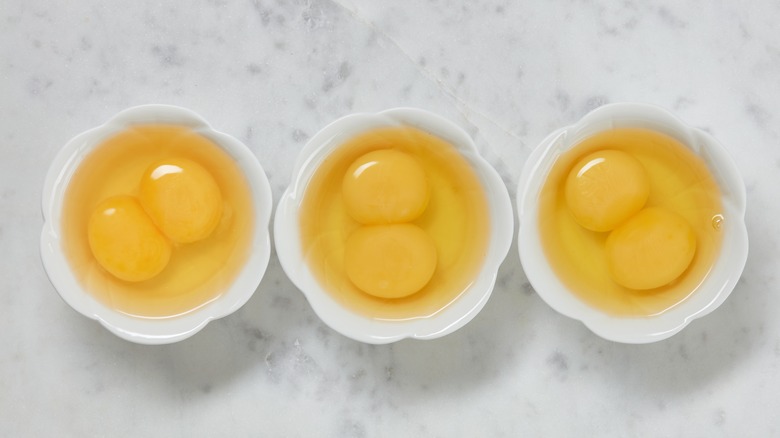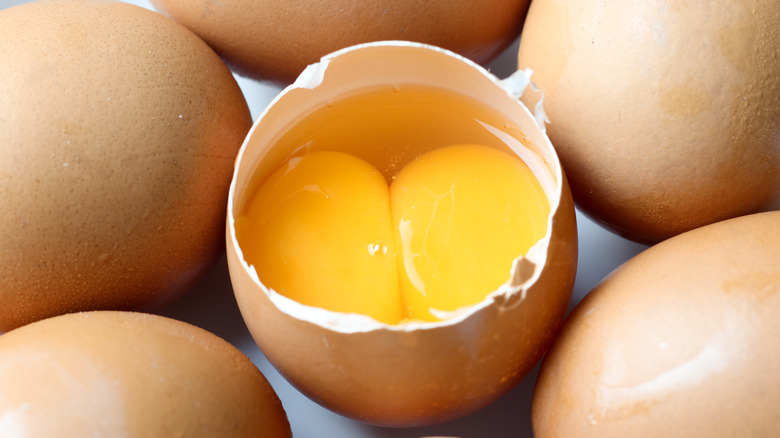The Reason Double-Yolked Eggs Are A Rare Find
If you're superstitious, you may have mixed feelings about cracking open an egg and finding two yolks, per Sauder's Eggs. After all, in some cultures, double-yolked eggs are associated with good fortune, while in others, double-yolked eggs are believed to foretell doom. For better or for worse, however, it's rare in this day and age to unwittingly stumble upon a double-yolked egg. And it's not because double-yolked eggs, themselves, are all that rare, according to Grub Street. That's especially true among young hens, as Pete and Gerry's Organic Eggs explains.
Moreover, a 2020 review paper published in World's Poultry Science Journal, maintains that up to 3% of all chicken eggs naturally occur with more than one yolk. Since the U.S. produced just under 97 million table eggs that same year, per United Egg Producers, that would have added up to just under three million double-yolked eggs in 2020. On the other hand, some egg farmers, including Pete and Gerry's and Nellie's Free Range, assert the odds of a hen laying a double-yolked egg are actually only one in a thousand. Even so, 97 million table eggs in 2020 would still have resulted in 97,000 double-yolkers.
While that's not many eggs compared with the total produced that year, it is still a lot. Accordingly, the question becomes: Where exactly have all these double-yolked eggs been hiding? Read on to learn why double-yolked eggs have become a rare find, at least in typical supermarket egg cartons.
Double-yolked eggs aren't hiding if you know where to look for them
Older generations may recall the novelty of discovering the occasional double-yolked egg in a carton of ordinary supermarket eggs, per News-Leader. But changes in quality control and egg packaging innovations have made double-yolked eggs an increasingly rare find in supermarkets. To wit, double-yolkers are both larger and more fragile than singletons. Accordingly, they neither fit nor survive well when packed in standard supermarket egg cartons.
Some commercial egg farmers, including Pete and Gerry's Organic Eggs and Nellie's Free Range, have since developed a production process by which their freshly laid eggs are sorted by size, with those that are judged too big/too fragile for conventional cartons being packaged together as either "jumbos" or "super jumbos." Some of these will be double-yolked; in fact, both Pete and Gerry's and Nellie's say that at least half of the eggs in each of their jumbo cartons are, indeed, double-yolkers. The remainder is made up of outsized single-yolkers. Others, including Sauder's Eggs, take the process one step further, by separating out ALL the double-yolked eggs and packing and selling them together in their own double-yolk-designated specialty cartons.
So how does Sauder's discern the difference between a double-yolked egg, on the one hand, and a jumbo or super-jumbo single-yolked egg, on the other? Sauder's says it relies on hand-candling — i.e., a remote visual inspection of the egg's interior through the use of strategically angled high intensity light (via United Egg Producers).

